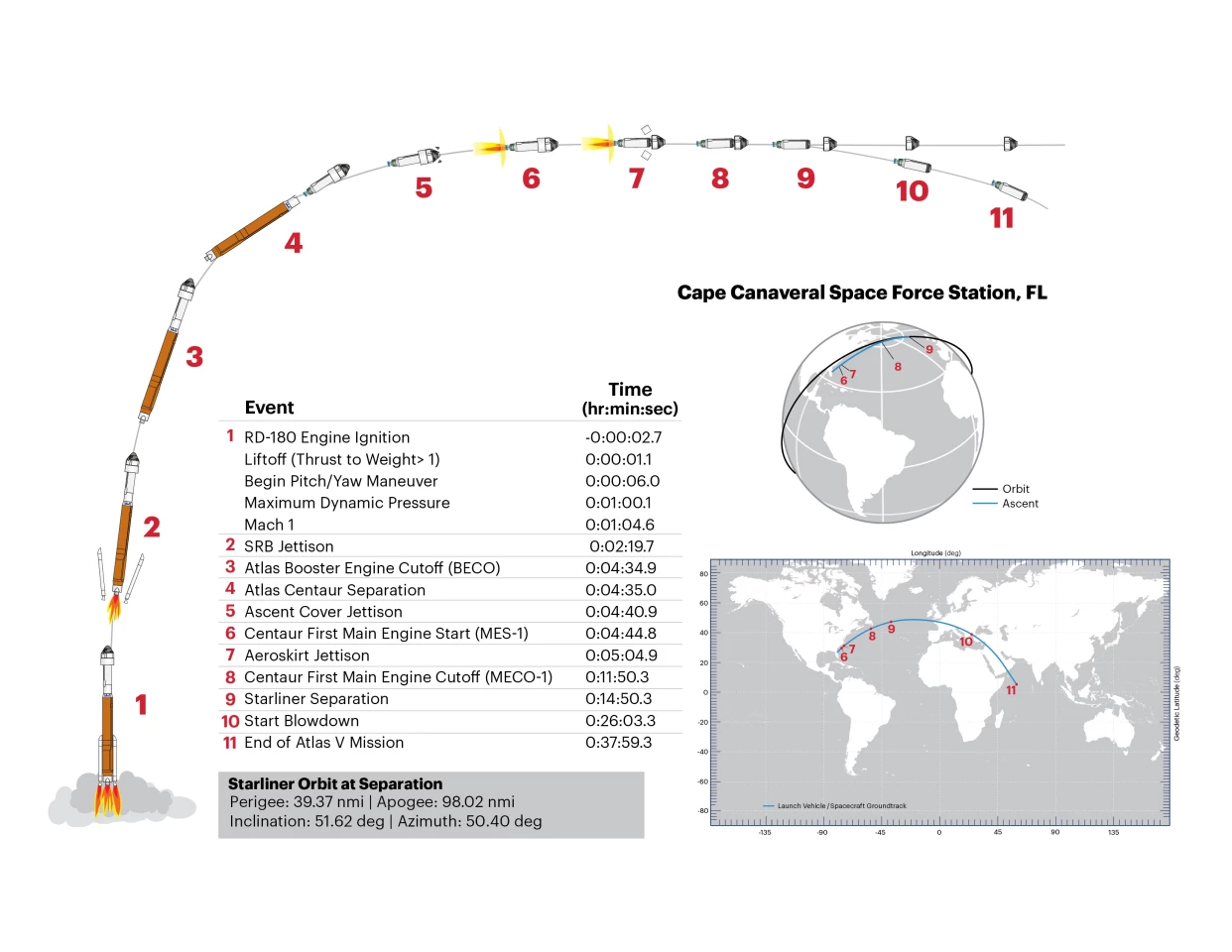On its third attempt, Boeing's CST-100 Starliner spacecraft reached Earth orbit today. At 6:55 pm EDT, the uncrewed passenger capsule launched from the Cape Canaveral Space Force Station in Florida atop a United Launch Alliance Atlas V rocket.
Rocket launches have become so common in the 21st century that they've lost a lot of the drama that marked the halcyon days of the Space Race of the 1960s. Today's launch was different because Boeing's Starliner has had a checkered history when it comes to getting into orbit, including a spectacular emergency landing.
Aside from the usual teething problems like a parachute failure during an abort test, Starliner has already had two launch failures. The first was in 2019 when a software glitch sent the capsule into the wrong orbit, and the second was in August 2021 when the launch was scrubbed due to a faulty valve that required a major overhaul of the spacecraft.

As in the previous missions, Orbital Flight Test-2 (OFT-2) is uncrewed, but later flights will carry astronauts, fulfilling Starliner's purpose of ferrying crew and cargo from American soil to low-Earth orbit. However, there is a "passenger" aboard the present flight in the form of a mannequin named Rosie the Rocketeer, clad in a Boeing space suit to maintain the capsule's proper center of gravity.
Today's launch went off without delays with the Atlas V rocket lifting off under the power of its RD-180 engine generating 860,200 lb of thrust, supplemented by a pair of solid rocket boosters with an additional 348,500 lb of thrust each.
The first stage pushed the rocket through the sound barrier about one minute into the flight, with the solid rockets jettisoning at the two-minute-22-second mark. The Atlas first stage shut down at four minutes 29 seconds and separated six seconds later. The Centaur second stage's dual RL10A-4-2 engines then took over and burned for seven minutes.

At the 14-minute-54-second mark, the Starliner separated and ignited the four thrusters in its service module, reaching orbit 31 minutes after launch.
Carrying 500 lb (226 kg) of food and provisions, Starliner is currently executing a series of orbital maneuvers that will allow it to rendezvous with the International Space Station (ISS) in about 24 hours. It will dock with the space lab for five to 10 days before returning to Earth for a parachute landing at the White Sands Missile Range in New Mexico, Edwards Air Force Base in California, Willcox Playa in Arizona, or Dugway Proving Ground in Utah, depending on its return orbit.
The video below is a replay of the NASA launch coverage.
Sources: NASA














